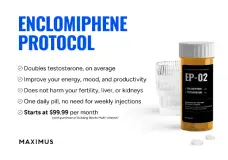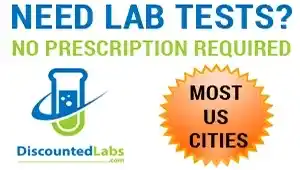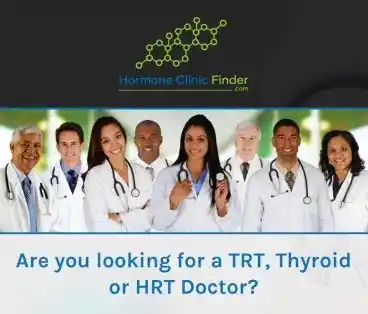13-Minute Podcast:
This podcast discussion examines the burgeoning role of compounding pharmacies, particularly in the context of GLP-1 medications, and how they are challenging the established dominance of Big Pharma. Driven by soaring drug costs, supply shortages, and a demand for personalized medicine, compounding pharmacies, often in partnership with telehealth platforms, are offering a more affordable and accessible alternative. This shift is exposing "cracks in the FDA’s regulatory system" and leading to a "proxy war for the future of medicine" between traditional pharmaceutical companies and this disruptive new model. The core themes revolve around access vs. oversight, the economic implications of drug pricing, and the legal and narrative battles over drug patents and public perception.

Discussion FAQS:
This podcast discussion examines the burgeoning role of compounding pharmacies, particularly in the context of GLP-1 medications, and how they are challenging the established dominance of Big Pharma. Driven by soaring drug costs, supply shortages, and a demand for personalized medicine, compounding pharmacies, often in partnership with telehealth platforms, are offering a more affordable and accessible alternative. This shift is exposing "cracks in the FDA’s regulatory system" and leading to a "proxy war for the future of medicine" between traditional pharmaceutical companies and this disruptive new model. The core themes revolve around access vs. oversight, the economic implications of drug pricing, and the legal and narrative battles over drug patents and public perception.
Discussion FAQS:
What are compounded GLP-1 medications and why are they gaining popularity?
- Compounded GLP-1 medications are custom-formulated versions of drugs like semaglutide and tirzepatide (known by brand names like Ozempic, Wegovy, Zepbound, and Mounjaro). They are gaining popularity because they offer a lower-cost, more accessible alternative to brand-name drugs, especially amidst skyrocketing demand, high prices (around $1,000/month in the U.S. compared to $100 elsewhere), and persistent shortages of the original medications. Compounding pharmacies can tailor these medications by adjusting doses, removing allergens, or creating combinations not available from Big Pharma, catering to individual patient needs that the "one-size-fits-all" industrial model often overlooks.
How are compounding pharmacies challenging traditional pharmaceutical companies (Big Pharma)?
- Compounding pharmacies challenge Big Pharma in several ways. Firstly, they offer a direct-to-patient model, often through telehealth platforms, bypassing the intermediaries (PBMs, wholesalers, insurance layers) that add significant cost to brand-name drugs. Secondly, they provide customized solutions to address issues like rigid dose formulations, chronic shortages, and the high cost of brand-name drugs, which Big Pharma's model struggles with. Lastly, some compounders, like Empower Pharmacy, are directly challenging Big Pharma's intellectual property by petitioning to invalidate drug patents, aiming to open the market for broader access regardless of FDA shortage statuses.
What are the main regulatory concerns and challenges associated with compounded medications?
- The primary regulatory challenge lies in balancing access with safety. While compounded medications offer flexibility and affordability, they operate within regulatory "gray zones." The FDA's current framework, designed for a pre-telehealth era, struggles to oversee hybrid telehealth-compounding platforms. Concerns include the use of non-equivalent salt forms, inconsistent quality, and sourcing issues, particularly when some compounders have mass-produced medications in ways that skirt individual prescription rules. State boards also have varying enforcement standards, further complicating oversight.
How has the rise of telehealth platforms impacted the compounding industry?
- Telehealth platforms have been instrumental in the re-emergence and mainstreaming of compounding. Companies like Hims & Hers and BlueChew have leveraged telehealth to offer compounded medications directly to consumers, emphasizing convenience, customization, and discretion. These platforms have rebranded compounding as a tech-enabled, consumer-first digital health service, expanding its reach beyond niche use cases into categories like GLP-1s, dermatology (e.g., Musely), and hormone replacement therapy. Telehealth has made medicine "borderless," pushing regulatory bodies to catch up with the rapid evolution of healthcare delivery.
What role has public perception and "misinformation" played in the debate between Big Pharma and compounders?
- Big Pharma has actively engaged in a "misinformation machine" to shape public opinion and state-level regulations against compounded GLP-1s. After the FDA declared shortages resolved, pharmaceutical companies focused on controlling the narrative through media stories warning of "fake Ozempic" and dangers associated with compounded drugs. These articles often blurred the lines between illicit, unregulated imports and legitimate 503A or 503B licensed compounders. Industry-backed groups supplied data and patient stories that conflated the two, leading to pressure on state regulators to adopt restrictive legislation that would effectively ban personalized compounded options.
What is "evergreening" in the context of drug patents, and how does it relate to Big Pharma's dominance?
- "Evergreening" is a tactic used by pharmaceutical companies to extend their monopolies on drugs. It involves making minor tweaks to existing drugs or obtaining additional patents on aspects of a drug (like new formulations or uses) to prolong their exclusivity beyond the initial patent expiration. This practice, often facilitated by the Hatch-Waxman Act, allows Big Pharma to maintain control over pricing and limit competition from generics or compounded alternatives for extended periods—sometimes up to 40 years, far exceeding the typical patent life cycles in the tech industry. This contributes to high drug costs and limited patient access.
What is Empower Pharmacy's significance in challenging Big Pharma's intellectual property?
- Empower Pharmacy is significant because it has directly challenged Eli Lilly's tirzepatide patent by petitioning the U.S. Patent Trial and Appeal Board to invalidate it based on prior art. This move is a strategic shift for compounders, signaling that they are no longer just filling access gaps but are actively testing the legal boundaries of pharmaceutical exclusivity. If successful, this challenge could significantly weaken Lilly's patent protection, potentially opening the door for broader compounding of GLP-1 drugs, regardless of their official FDA shortage status, and setting a precedent for future patent battles.
What does the rise of compounding reveal about the current healthcare system and the future of personalized medicine?
- The rise of compounding is a "referendum on a broken model" that prices patients out of essential medications, hinders innovation, and criminalizes alternative solutions. It reveals that the current system, heavily influenced by Big Pharma's monopolies, opaque middlemen, and outdated regulations, struggles to meet the complex and diverse needs of patients. The demand for compounded medications signals a patient-led rejection of "one-size-fits-all" approaches and a strong desire for affordable, accessible, and personalized medicine. It suggests that the future of healthcare will increasingly involve customized treatments, likely driven by market players and technological advancements that challenge established industry practices and regulatory frameworks.













